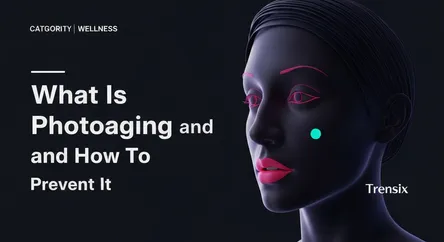Wellness
What Is Photoaging and How To Prevent It

Discover what photoaging is, why it's a hot topic in skincare, and how repeated sun exposure prematurely ages your skin and increases health risks.
What is it?
Photoaging is the premature aging of the skin caused by repeated exposure to ultraviolet (UV) radiation, primarily from the sun but also from artificial sources like tanning beds. Unlike natural chronological aging, photoaging accelerates visible changes to the skin. UV rays damage the skin's essential proteins, collagen and elastin, which are responsible for its smooth and youthful appearance. This damage leads to signs like wrinkles, fine lines, pigmentation issues such as "age spots," and a rough skin texture. It's estimated that up to 90% of visible skin aging is due to the effects of sun exposure.
Why is it trending?
Awareness of photoaging is growing as people become more educated about skin health and the long-term consequences of sun exposure. The beauty and wellness industries heavily promote anti-aging solutions and preventative care, with sunscreen being a primary defense. This has led to increased demand for broad-spectrum sunscreens and innovative skincare treatments designed to repair sun damage. Social media and health campaigns have also played a significant role in highlighting the importance of sun protection not just for preventing skin cancer but for maintaining a youthful appearance.
How does it affect people?
Photoaging most visibly affects areas with high sun exposure like the face, neck, and hands. People may experience a loss of confidence due to the appearance of deep wrinkles, leathery skin, and uneven skin tone. Beyond cosmetic concerns, photoaging significantly increases the risk of developing skin cancer, including melanoma. The damage can begin as early as the teen years, and its cumulative effects become more pronounced over time. This can lead individuals to seek dermatological treatments like chemical peels, laser resurfacing, and retinoids to mitigate the visible damage.